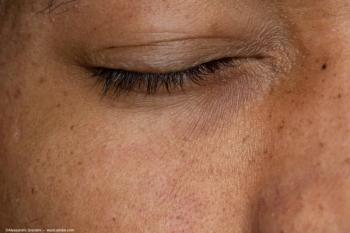
Retina experts reflect on how OCT transformed patient care
Key Takeaways
- OCT has transformed retinal practice, enhancing diagnostic accuracy and treatment efficiency while reducing reliance on invasive imaging modalities.
- The integration of OCT with anti-VEGF therapy has significantly improved patient outcomes, allowing for precise treatment decisions.
Optical coherence tomography (OCT) has become so integral to retinal practice that it is nearly impossible to imagine the field without it. Once a novel imaging tool, OCT now serves as a diagnostic cornerstone and a daily guide for treatment decisions. Leading retina specialists recently reflected on how OCT reshaped patient care, efficiency, and the evolution of therapeutic strategies in ophthalmology.
A defining advancement in ophthalmology
“When I started my training, we were just transitioning from time-domain to spectral-domain OCT,” said Roger A. Goldberg, MD, MBA. “It adds so much to our understanding of retinal diseases and to our efficiency in seeing large numbers of patients. It’s hard to imagine ophthalmology without OCT—it’s been a game-changing technology, right up there with anti-VEGF therapy and phacoemulsification.”
Indispensable to modern retina practice
For many physicians who trained after OCT became commonplace, the technology is inseparable from their identity as retina specialists.
“I cannot think of being a retina specialist without OCT,” said Jay Chhablani, MD. “It gives us great information about disease identification, follow-up, and treatment response.”
OCT’s precision allows clinicians to make timely treatment decisions that preserve vision.
“Without OCT, we’d likely be overtreating patients to make up for uncertainty—or waiting too long and treating only after vision loss occurs,” said Sophie J. Bakri, MD. “OCT allows us to intervene early, before irreversible damage.”
Improved diagnostic accuracy and cost savings
OCT has largely replaced more invasive imaging modalities in everyday practice.
“We used to rely on fluorescein angiography and electrophysiology,” said Andrew G. Lee, MD. “In cases of unexplained vision loss, OCT now provides the answer 75% of the time. It’s saved patients from unnecessary MRIs, CTs, and lumbar punctures—and reduced costs by avoiding misdiagnosis.”
Justis Ehlers, MD, FASRS, noted that OCT has not only replaced older modalities but also deepened disease understanding. “Fluorescein used to be the workhorse, but now OCT is essential,” he said. “It’s the only way to assess photoreceptor integrity, like the ellipsoid zone, which is crucial for developing and targeting new therapeutics.”
The marriage of OCT and anti-VEGF therapy
Several experts emphasized the synergy between OCT imaging and anti-VEGF treatments.
“OCT and injections really grew hand-in-hand,” said Matthew Starr, MD. “Without OCT, we wouldn’t have the same treatment precision or patient outcomes. It made possible what we do today.”
Yasha S. Modi, MD, agreed. “OCT gave us the framework to use anti-VEGF drugs effectively. Once Avastin and Lucentis arrived, OCT became indispensable for assessing treatment response; it’s completely integrated into daily practice.”
Steven G. Ness, MD, called this pairing “a marriage made in heaven,” noting that OCT has made intravitreal injection therapy vastly more effective for patients.
Seeing beyond the naked eye
Even the most skilled clinicians acknowledge the unmatched sensitivity of OCT.
“Even the best ophthalmoscopist cannot match OCT in detecting subtle fluid or edema,” said Andrew A. Barkmeier, MD. “We benefit tremendously from its precision.”
Ella H. Leung, MD, added, “OCT’s ability to visualize micron-thick edema has advanced our ability to prevent worsening disease far beyond what the naked eye can detect.”
Still, some physicians cautioned that clinical acumen should remain central.
“One of my mentors told me not to become so dependent on OCT that I lose my clinical exam skills,” recalled Vivienne S. Hau, MD, PhD. “While OCT improves efficiency and accuracy, maintaining observational skill is equally important.”
The “vital sign” of retina
“OCT has become like a vital sign for [the] retina,” said Sally S. Ong, MD. “It provides an immediate snapshot of macular health and fluid status in diseases such as AMD and diabetic macular edema. It allows us to treat down to no fluid, improving long-term outcomes.”
Ong added that advancements such as OCT angiography and widefield imaging are further expanding possibilities: “It’s an exciting time for imaging and retina specialists.”
The future of OCT
Younger physicians who trained with OCT from day one recognize how much easier it has made modern practice.
“I’m too young to know what it was like without OCT,” said Nimesh A. Patel, MD, FASRS. “It’s made our work more accurate and efficient. The next step is broader access; perhaps every optometry office will have it.”
David S. Liao, MD, PhD, agreed: “High-resolution and angiographic OCT have revolutionized medical retina. Surgical OCT will be next, transforming how we operate and track treatment response.”
A lasting impact
Across all perspectives, one message was clear: OCT is not merely a diagnostic tool but a defining pillar of modern retina care.
“I don’t like to imagine a world without OCT,” said Danny A. Mammo, MD. “Without it, patients would lose more vision, more independence, and more quality of life. It has changed everything.”
Newsletter
Don’t miss out—get Ophthalmology Times updates on the latest clinical advancements and expert interviews, straight to your inbox.


















































.png)


